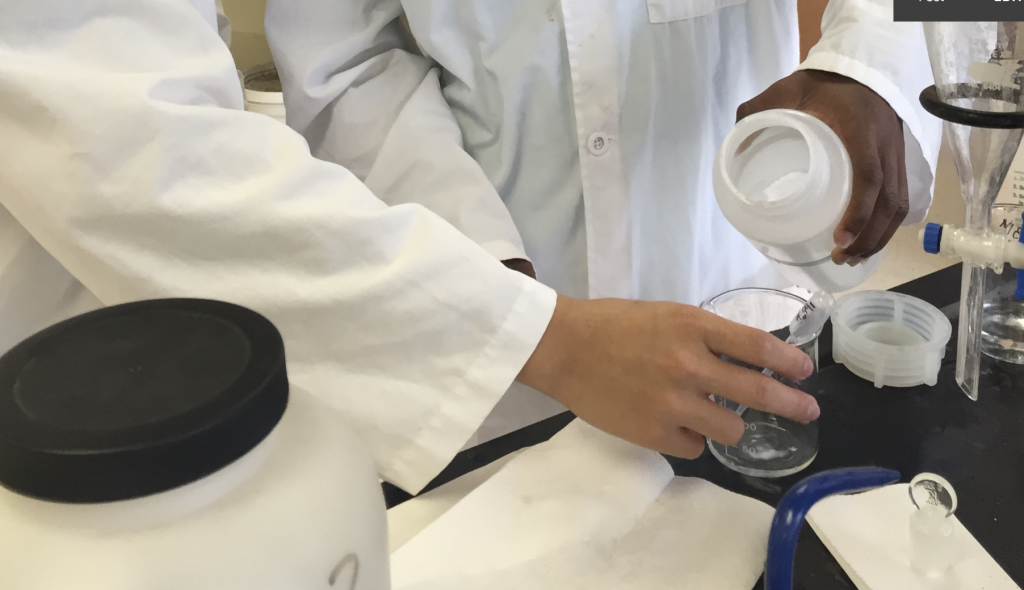Analytical Chemistry, a semester long course taught by MSMS alumnus Dr. Elizabeth Morgan, meets four times a week to investigate complex, higher-level chemistry. All students in the class are seniors, as it is required to have completed at least a year of MSMS chemistry before entering the class. AC is a lab-based course. Students spend at least three days a week performing labs, and the other day learning how to do calculations in order to complete the labs. This week, the students in the class performed their sixth titration, and their goal was to find the average mass of Vitamin C in a drugstore Vitamin C tablet.
Normally this would be done by performing a titration, but a normal titration would not work in this instance. Titrations are performed to find an unknown concentration of a substance, but Vitamin C cannot be directly titrated. Students performed what is called a back titration, which involved adding an additional reagent to the substance you want to titrate, and titrating the excess from that reaction. Then, the amount of excess can be subtracted from the original reagent to find the quantity of the original substance. More than that, most titrations performed in normal high school chemistry classes are acid-based titrations; however, the titration performed in Analytical Chemistry this week was a more complex iodometric titration. This means that it was iodine based instead of acid based. This lab was the culmination of student’s learning about and performing titrations; next week they will move on to spectroscopy.

